In the 1920s, women's dresses underwent a significant transformation, reflecting new cultural freedoms. You'd see flapper dresses with dropped waists and shorter hemlines, designed for movement and self-expression. Lightweight fabrics like silk and art deco patterns added glamour to styles. Coco Chanel introduced the iconic Little Black Dress, marking a shift toward versatile fashion. Evening gowns boasted luxurious embellishments, while accessories like cloche hats and long gloves completed the look. These changes didn't just signify fashion; they encapsulated a broader societal shift. If you're curious about how these styles influenced modern fashion, there's much more to uncover.
Overview of 1920s Dresses
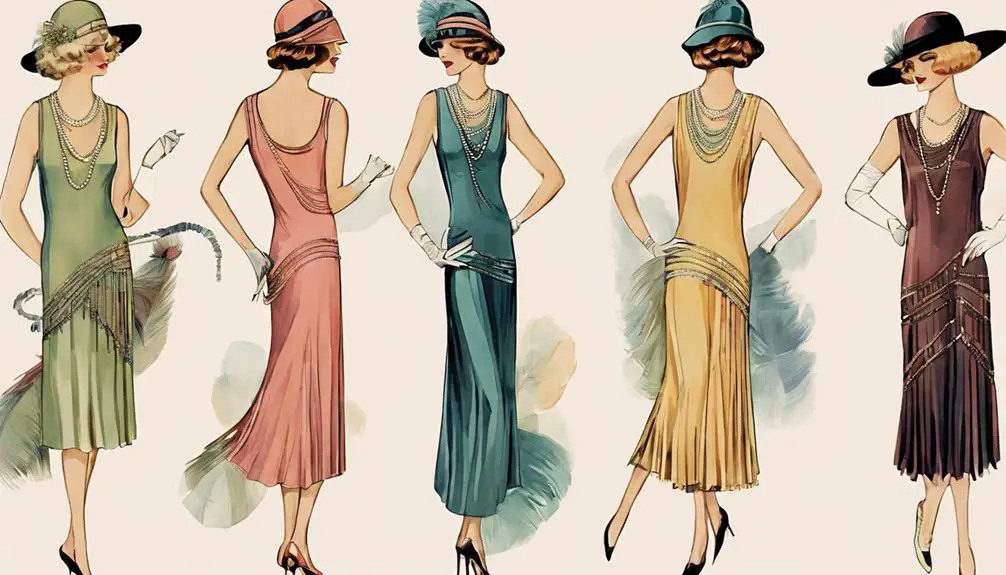
Embracing a revolutionary spirit, the dresses of the 1920s marked a dramatic departure from previous fashion norms. You'll notice this shift in the iconic flapper dress, characterized by its dropped waist and shorter hemlines that often fell to mid-shin or just below the knee. This new silhouette reflected a cultural movement towards liberation and freedom, allowing women to express themselves through dance and social engagement.
Vintage style took on a fresh interpretation during this era, with intricate beadwork and fringe that added movement and flair. Coco Chanel's introduction of the Little Black Dress in 1926 cemented black as a staple for both day and evening wear, transforming wardrobes across the globe.
Fabrics embraced lightweight materials like silk and organdy, often embellished with striking art deco patterns, sequins, and beads. The versatility of 1920s dresses catered to various occasions, from casual day dresses to elegant evening gowns, mirroring the social shifts and newfound freedoms women experienced during this transformative decade. This period not only redefined fashion but also played a crucial role in the overarching narrative of women's emancipation and self-expression.
Key Fashion Trends
The 1920s showcased a myriad of key fashion trends that defined the decade and transformed women's wardrobes. As you explore this vibrant era, you'll notice the emergence of styles that embraced freedom and modernity. The Flapper Dress in Black became a symbol of the Roaring Twenties, featuring dropped waists and intricate beadwork. These dresses often had fringe that swayed with movement, making them ideal for lively parties. Additionally, vintage clothing from this era is characterized by high-quality fabrics and unique craftsmanship, which can be identified through vintage clothing labels that often provide essential information about the brand and era.
Key fashion trends of the 1920s include:
- La Garçonne look with boyish silhouettes and shorter hemlines
- Fringe Party Dress designs that allowed for dance and expression
- The revolutionary Little Black Dress (LBD) by Chanel
- The iconic bob hairstyle, representing modern femininity
- Accessories like cloche hats, pearls, and long gloves for elegance
These elements didn't just shift aesthetics; they marked significant milestones in fashion history, pushing boundaries for women's self-expression and liberation. The 1920s laid the groundwork for future generations, making the attire of this era not just clothing, but a statement of identity and empowerment.
Iconic Styles and Designs

Elegance and innovation define the iconic styles and designs of women's dresses in the 1920s, showcasing a remarkable blend of creativity and cultural change. At the forefront, the flapper style dress emerged, characterized by dropped waists, fringe, and intricate beadwork that allowed for free movement. This design not only reflected the era's spirit of liberation but also became a symbol of youthful exuberance.
Tea dresses made from lightweight fabrics like silk and organdy captured the essence of afternoon social gatherings, featuring knee-length skirts and delicate lace adornments. These dresses provided a contrast to the sumptuous evening gowns of the decade, which boasted luxurious fabrics and bold designs. With lower necklines and dazzling rhinestone embellishments, they highlighted the opulence of the roaring twenties.
The introduction of the Little Black Dress (LBD) by Coco Chanel in 1926 marked a turning point, offering a versatile and chic option that embodied modernity and elegance. In this vibrant decade, accessories played a vital role, enhancing the overall aesthetic with cloche hats, long gloves, and pearl necklaces, making the iconic styles truly unforgettable.
Accessories and Styling Tips
Accessories played an essential role in defining the sophisticated look of women's fashion in the 1920s. To achieve an elegant, vintage-inspired style, you'll want to focus on key pieces that embody the glamour of the era. Here are some essential accessories and styling tips:
- Classic 1920s headpieces: Think ornate headbands adorned with feathers or jewels.
- Long gloves: These add a touch of refinement, perfect for any evening affair.
- T-strap heels: Not only stylish but also comfortable for dancing the night away.
- Pearl or diamond-inspired jewelry: These pieces enhance your outfit's elegance and sparkle.
- Tulle overlays: Their delicate texture will soften the look of your dress.
For the authentic 1920s vibe, choose luxurious fabrics that reflect the era's lavishness. Incorporate vintage hairstyles like finger waves or pin curls to perfectly complement your ensemble. Don't forget that unique elements such as cold shoulder designs or asymmetric hemlines can provide a modern flair while still paying homage to the past. By combining these accessories with thoughtful styling tips, you'll effortlessly embody the sophistication of the 1920s.
Notable Designers

Five influential designers transformed women's fashion in the 1920s, each leaving a unique mark on the decade's style. Gabrielle Chanel, for instance, revolutionized evening wear with her introduction of the Little Black Dress (LBD), promoting a vintage simplicity that emphasized versatility. This shift allowed women to embrace a more modern approach to fashion, moving away from extravagant designs.
In contrast, Elsa Schiaparelli dazzled the fashion world with her bold, colorful creations and surrealist influences, challenging conventional aesthetics. Her daring approach added a dynamic layer to 1920s style. Jeanne Lanvin celebrated femininity with her romantic Robe de Style, characterized by flowing lines and luxurious fabrics, which offered women an elegant alternative to the more structured silhouettes of the time.
Callot Soeurs epitomized opulence with intricate designs and luxurious textiles, creating exquisite dresses that were the pinnacle of sophistication. Finally, Jean Patou and Madeleine Vionnet contributed greatly to the era, with Patou's sporty styles reflecting the active lifestyle of the modern woman and Vionnet's innovative bias-cut techniques enhancing the female form. Together, these designers shaped a transformative decade in women's fashion, defining a new era of style and expression.
Cultural Influence and Significance
How did the cultural shifts of the 1920s reshape women's fashion? The Roaring Twenties marked a radical transformation, with the flapper style emerging as a symbol of liberation. Women embraced shorter hemlines and dropped waist silhouettes, reflecting newfound freedom. The vibrant jazz culture influenced not just music but fashion, leading to dresses designed for movement and expression. This period also saw a rise in the popularity of brands like Betty Barclay, which catered to the evolving tastes of women.
Imagine the scene:
- Intricate beadwork shimmering under dance floor lights
- Bold colors that echoed the energy of jazz clubs
- The Little Black Dress, versatile for any occasion, redefined elegance
- Lightweight fabrics flowing effortlessly at garden parties
- Sophisticated designs that showcased societal status and individuality
This era also saw the influence of iconic designers like Coco Chanel, who revolutionized perceptions of black attire. Social events became stages for women to flaunt their style, blending sophistication with the playful exuberance of the times. These fashion choices didn't just reflect trends; they encapsulated a cultural awakening, allowing women to assert their identities and break free from traditional constraints. The dresses of the 1920s were more than fabric; they were declarations of independence and modernity.
Popular Dress Collections

The bold fashion choices of the 1920s directly influenced popular dress collections that emerged during this vibrant decade. Flapper dresses, characterized by fringe and beadwork, embodied the spirit of freedom and self-expression. Iconic designs like the Little Black Dress (LBD), popularized by Chanel, revolutionized women's wardrobes, offering stunning vintage elegance and versatility.
Collections often featured vibrant colors and art deco patterns, showcasing the era's love for glamour. Evening gowns adorned with intricate bead and sequin designs allowed women to channel the opulence of the Great Gatsby era, making each occasion feel extraordinary.
Here's a glimpse into the key elements of these popular collections:
| Dress Type | Key Features | Iconic Influence |
|---|---|---|
| Flapper Dress | Fringe, beadwork, dropped waist | Spirit of freedom |
| Little Black Dress | Versatility, elegance | Chanel's innovation |
| Evening Gown | Beads, sequins, opulence | Great Gatsby extravagance |
Throughout this decade, dresses were available in various sizes, catering to diverse body types, with many featuring zippers for comfort. This blend of style and practicality set the stage for modern fashion.
Shopping Experience and Customer Service
Steering the shopping experience for women's dresses in the 1920s reveals a blend of convenience and thoughtful service that enhances customer satisfaction. Imagine stepping into a world where finding the perfect party dress in black, perhaps for a Gatsby themed soirée, is only a few clicks away. This seamless online experience guarantees that each beautiful dress you order is delivered promptly and with care. Additionally, understanding the provenance of your vintage dress can add to its charm and value, making it even more special for your collection, especially when coupled with insights from vintage tag identification.
- Free shipping on orders over $50 AUD within Australia
- Quick shipping options to the US and New Zealand
- Simple ordering process with immediate processing
- Thoughtfully gift-wrapped items in tissue paper
- Quality assurance checks before dispatch
With customer service just a phone call away, you can easily address any inquiries, guaranteeing your shopping experience is smooth and enjoyable. Each dress not only arrives in pristine condition but also carries the charm of personalized care. This attention to detail transforms the act of shopping into a delightful experience, allowing you to focus on what truly matters: finding that perfect dress that makes you feel fabulous.
Hairstyles of the 1920s
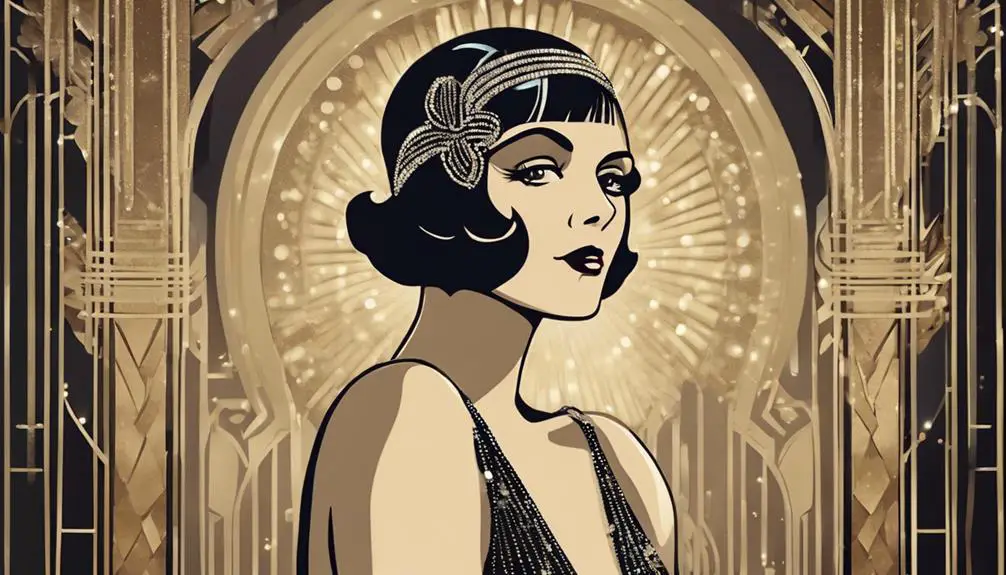
In the vibrant landscape of 1920s fashion, women's hairstyles became a powerful expression of individuality and newfound freedom. The bob hairstyle emerged as an iconic symbol of this era, characterized by its short, sleek cut that often grazed the ears. Figures like Irene Castle and Louise Brooks popularized this look, which by 1926, had shifted from an avant-garde statement to a mainstream trend. Vogue even declared the bob the dominant hairstyle among fashionable women.
The "Castle band," a softer variation of the bob, featured gentle waves and was often adorned with decorative headbands—perfectly embodying the playful elegance of flapper style. Women also embraced pin curls and vintage finger waves, which added texture and sophistication, reflecting the 1920s glamour that defined the decade.
This significant shift toward shorter cuts symbolized broader societal changes, as women began to assert their independence and challenge traditional norms. By adopting these bold hairstyles, you not only aligned with contemporary fashion but also embraced the spirit of the times, celebrating a newfound freedom that would pave the way for generations to come.
Frequently Asked Questions
What Was the Dress Style in the 1920s?
In the 1920s, you'd see dress styles featuring dropped waists and loose silhouettes. Hemlines rose, allowing freedom of movement, while embellishments like beads and fringe added glamour, reflecting the decade's vibrant, transformative spirit.
What 3 Major Changes Happened to Women's Dresses in the 1920s?
You'll notice three significant changes: waistlines dropped dramatically, hemlines rose to below the knee, and fabrics became lighter. These shifts reflected a newfound freedom, challenging traditional femininity and embracing comfort and practicality in women's fashion.
What Was the Fashionable Female Shape in the 1920s?
The fashionable female shape in the 1920s emphasizes a boyish silhouette, featuring a dropped waist and streamlined lines. You'd notice this androgynous look promoting freedom of movement, reflecting a modern aesthetic and youthful liberation.
What Women's Fashion Icon Was Popular During the 1920s?
You'll find Coco Chanel stands out as a pivotal fashion icon of the 1920s, introducing revolutionary styles like the Little Black Dress, which combined elegance and versatility, reshaping women's fashion for generations to come.
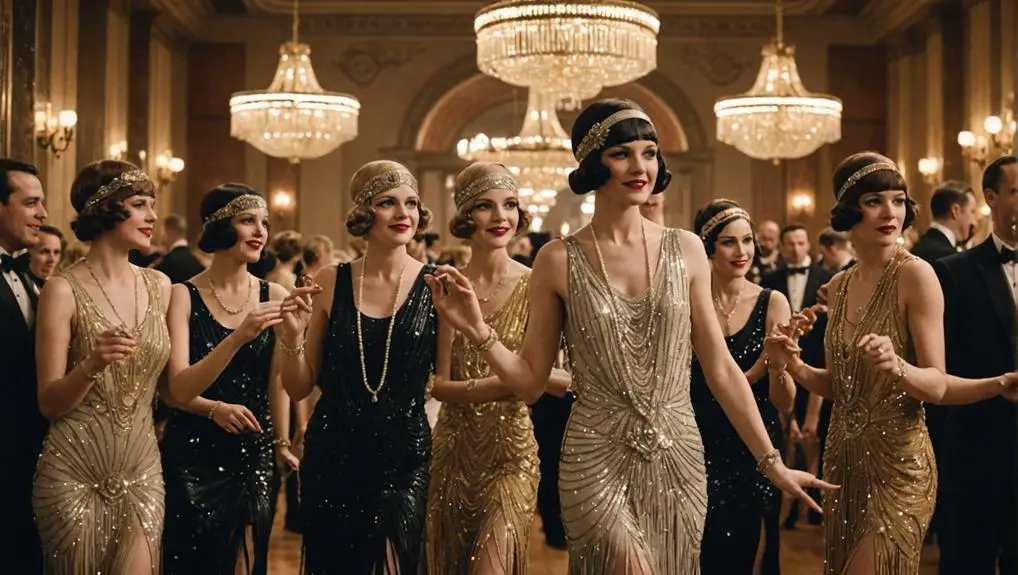

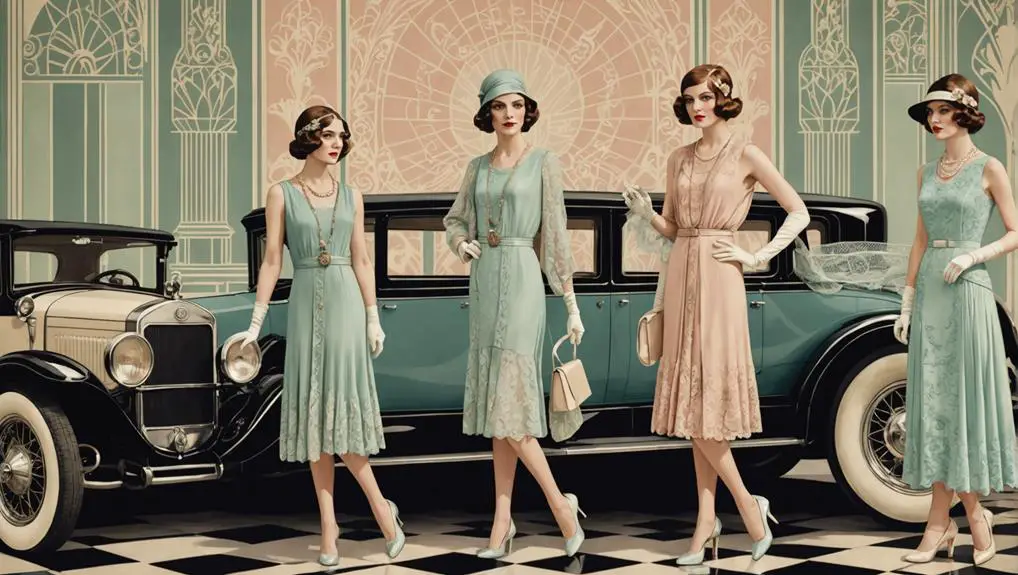

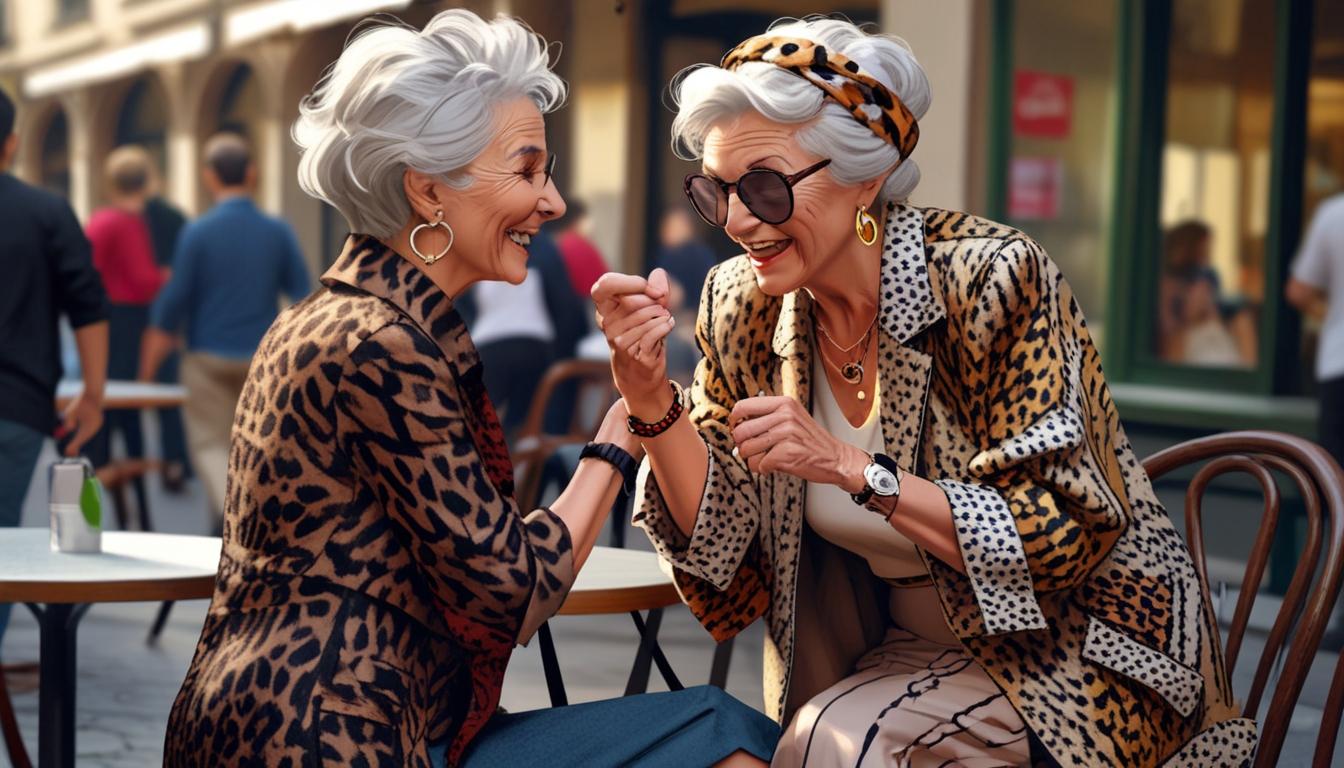
Please let me know if you’re looking for a
article author for your site. You have some really great posts and I believe I would
be a good asset. If you ever want to take some of the load off, I’d love to write some content for your blog in exchange for a link back to mine.
Please send me an email if interested. Many thanks!
Spot on with this write-up, I seriously believe that this amazing site
needs far more attention. I’ll probably be back again to read more,
thanks for the info!